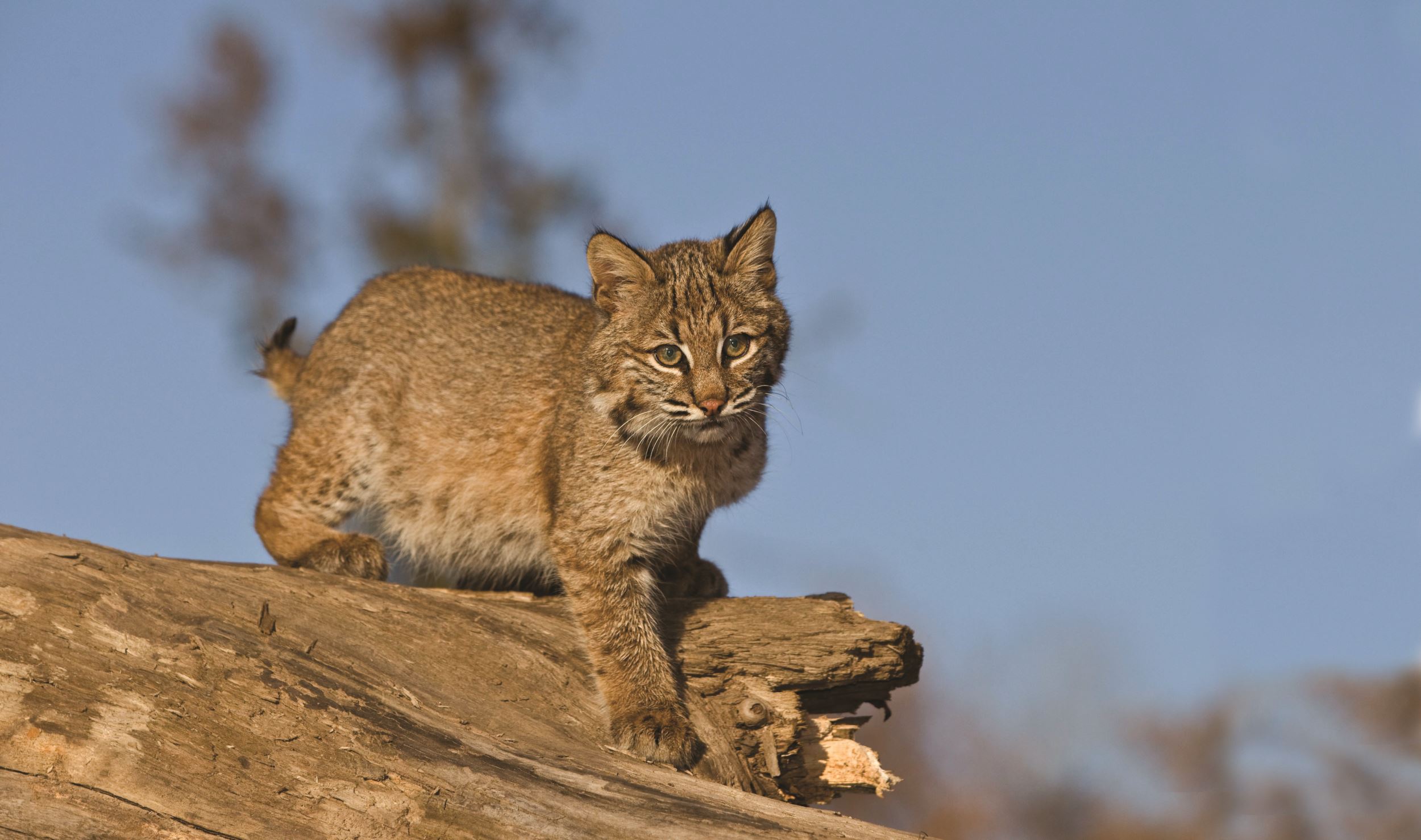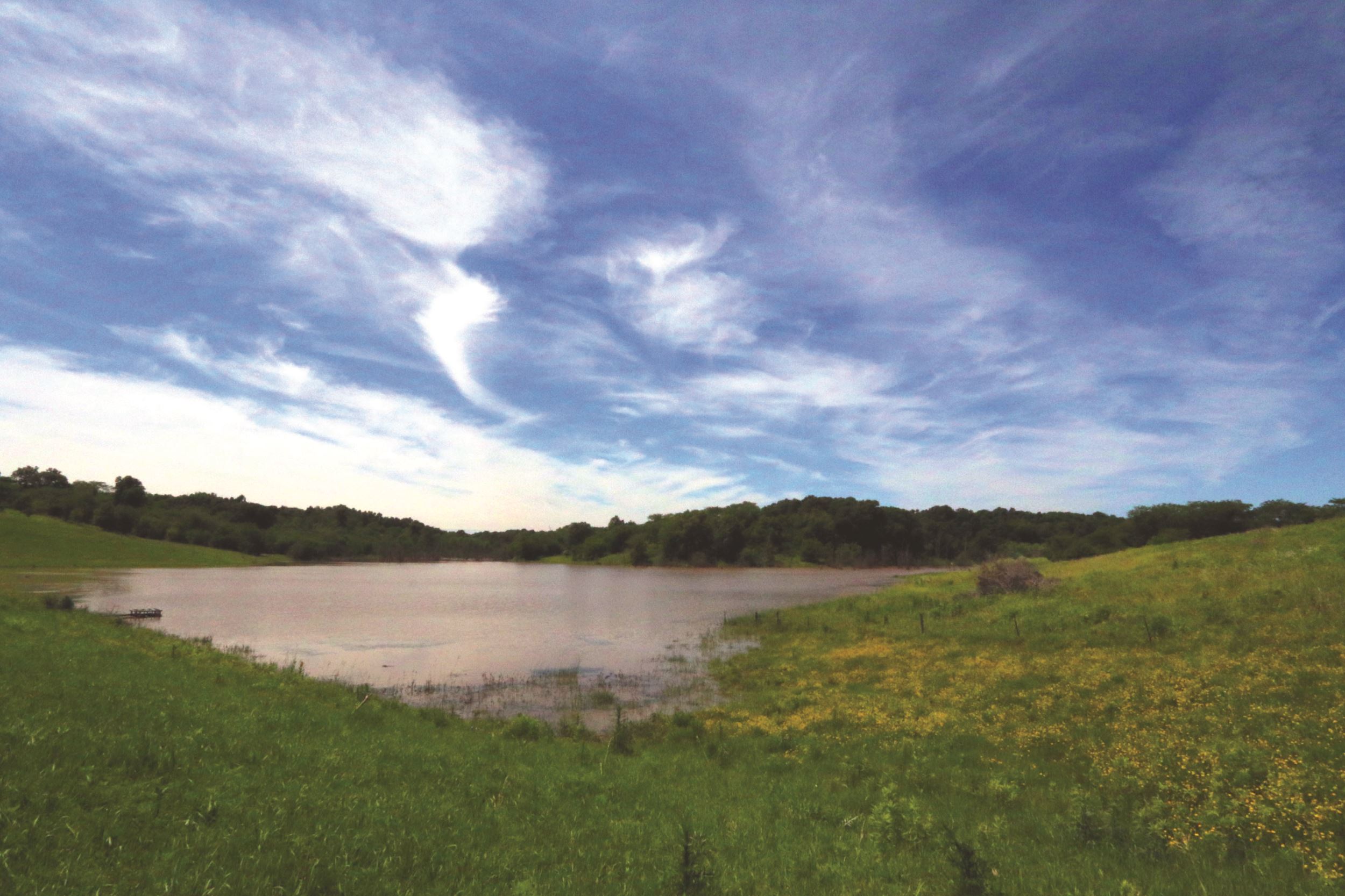Comeback ‘Cats
Posted on July 27, 2016 in Blog

A young bobcat scans for prey from his elevated vantage point in a riparian woodland.
A feline motion causes the deer hunter to quickly turn his gaze east. Catching the sudden movement, the animal freezes, then swivels to gaze at the hunter, revealing its distinctive cheek ruffs. “Finally,” the hunter sighs. “A bobcat.”
Secretive and elusive creatures, bobcats generally travel and hunt alone, except during spring breeding season. They instinctively fear people and will chart a path to avoid close encounters.
Bobcats (Lynx rufus) are the most widely distributed native cats in North America. But by the 1970s, the bobcat population in Iowa had declined to such an alarming level—primarily as a result of unregulated trapping and hunting and loss of habitat in the 1900s—they were listed as an Endangered Species in 1977.
State wildlife biologists correctly believed that if protected, the remaining breeding population in southern Iowa would thrive and disperse.
Habitat is key
Iowa’s southern counties provide bobcats ideal habitat: wooded river corridors and stands of timber with brushy undergrowth and distinct edges along open areas. This type of rough land attracts rabbits, squirrels, voles and mice —bobcats’ favorite prey. Ambush predators, bobcats use thick vegetation to hide and wait for prey to wander close enough for them to pounce or stalk their prey from a short distance.
By 2007, the bobcat population in Iowa had grown in the southern counties sufficiently for the Iowa Department of Natural Resources to permit limited trapping and hunting. Today, regulated trapping and hunting is available in 35 southern and western counties.
Vince Evelsizer, Iowa DNR furbearer and wetland biologist, estimates the current Iowa bobcat population at 4,500 – 6,500 and says the population is growing and spreading. He credits the expansion of Conservation Reserve Program (CRP) in the 1990s for providing more habitat bobcats needed to thrive. Recovery has been slower in central and northern counties, where working lands dominate the landscape, resulting in limited prey and reduced cover that bobcats require.

Faust Heritage Area offers suitable habitat that attracts small prey and predators, including bobcats, coyotes, and gray and red foxes.
Faust Heritage Area is a haven for wildlife, including bobcats
Iowa Natural Heritage Foundation owns and is restoring 623 acres of land in Appanoose and Monroe counties known as Faust Heritage Area.
In 1997, Dr. David Faust and his wife, Patricia, consulted INHF about their “rough farm.” They were moving, and Dr. Faust wanted to ensure their land would always be protected and well managed. Eventually, they offered to donate two-thirds of its value if INHF could compensate the other third, confident the land they loved would remain wild — forever. Funding from a bequest from Richard S. “Sandy” Rhodes II made that possible.
INHF land stewardship crews and conservation corps teams have cleared undergrowth from the oak savanna and opened up remnant prairies to sunshine. Prescribed burns have reinvigorated native plant growth, including Indian paintbrush, prairie violet and native sedges and grasses. Three ponds were installed, along with stream buffers in Faust Heritage Area — which is a part of the Soap Creek Watershed — to slow the flow of water and minimize soil erosion.
USDA cost share programs including the Wildlife Habitat Incentive program have provided funding for multi-year projects to improve habitat and attract a variety of wildlife. Bobcats, along with coyotes and red and gray fox now roam and hunt this land. Several bird species including, bald eagles, woodcocks and bluebirds have also returned to the area.
Bobcats are a deserving native species
Land like Faust Heritage Area provides habitat predators at the top of the Iowa wildlife chain require to survive. The resurgence of these native cats resurrects part of our heritage.
Some bird hunters inaccurately believe bobcats are responsible for the decline in Iowa’s gamebird population, but research shows birds comprise only 5% of a bobcat’s diet. And, some people fear bobcats will attack people. Evelsizer assures “there is no attack on humans by bobcats on record in Iowa’s history. Bobcats fear humans; we do not need to fear bobcats.”
If out hiking or hunting you cross paths with a bobcat, count yourself lucky. You’ve witnessed something many outdoors enthusiasts spend a lifetime pursuing.